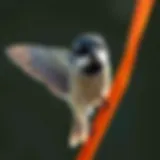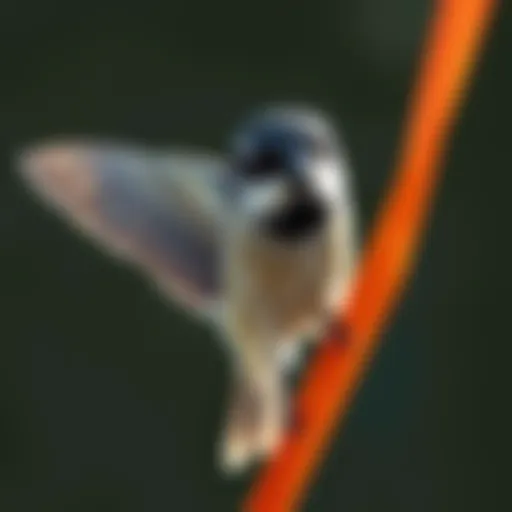Mastering Stink Bug Control: Effective Strategies
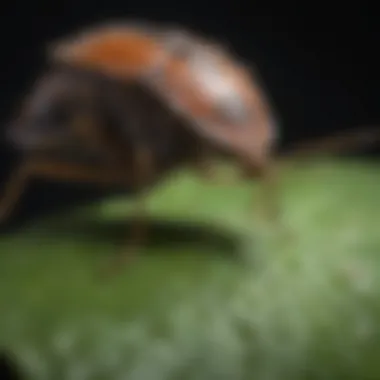

Intro
Stink bugs, often an unwelcome guest in gardens and homes, present a unique challenge for many individuals, especially housewives and homeowners. Understanding how to effectively manage these pests is crucial. They don’t just invade, but their presence can lead to significant frustrations, impacting not only the aesthetics of your home but also the quality of your plants and crops. This article will provide comprehensive strategies to tackle the stink bug conundrum effectively.
Understanding Pests
Definition of Pests
In the context of home and garden, pests encompass organisms that adversely affect our environment, health, and well-being. Stink bugs belong to this category as they can damage crops, invade living spaces, and create unpleasant odors when threatened. Their distinctive smell is a defense mechanism, and understanding this aspect gives insight into why these bugs tend to be notorious.
Importance of Pest Identification
Identifying stink bugs is the first step in managing their infestation. There are multiple species, but the brown marmorated stink bug is the most common in many parts of North America.
- Key Characteristics: They have a shield-like shape with brown and black markings, and an adult is typically about 1 inch long.
- Recognizing their specific habits helps in choosing a suitable management approach.
By accurately identifying these pests, homeowners can apply appropriate strategies more effectively. Knowing what you are dealing with sets the stage for sustainable pest control.
Prevention Techniques
Home and Garden Preventative Measures
Maintaining a pest-free home and garden begins long before the stink bugs make an appearance. Here are some practical steps:
- Seal Entry Points: Check windows and doors for gaps. Using caulk or weather stripping can help prevent these bugs from sneaking inside.
- Landscape Management: Keeping plants away from the house and ensuring a tidy garden reduces hiding spots.
- Remove Food Sources: Stink bugs are attracted to ripening fruits and vegetables. Regularly check your garden and remove overripe produce.
Seasonal Prevention Tips
Understanding the natural patterns of stink bugs can bolster your preventative measures. For instance, as seasons change, so do their behaviors:
- Spring: Conduct thorough inspections and outdoors clean-up to discourage nesting.
- Fall: This is when stink bugs begin seeking warmth. Install screens on windows to thwart their entry.
By preparing before their peak seasons, you lay a strong groundwork for effective management of these pests.
Eco-Friendly Pest Control Solutions
Overview of Sustainable Practices
In today’s world, the emphasis is shifting towards sustainable pest control methods. Homeowners are encouraged to adopt eco-friendly techniques instead of resorting to harmful chemicals. Educating oneself on these approaches can prove beneficial.
Natural Remedies and Their Effectiveness
Several natural remedies exist that can help control stink bug populations without harming the environment:
- Soap Spray: A mixture of water and mild soap can suffocate and kill these bugs on contact.
- Essential Oils: Scents like mint or clove are known to repel stink bugs. Spraying a diluted solution can deter them effectively.
"Utilizing natural solutions can protect not just your home, but also the ecosystem around you."
Combining these methods with traditional knowledge can yield a holistic approach to pest control that caters to both immediate concerns and long-term ecological health.
Preface to Stink Bugs
Stink bugs may seem like a nuisance at first glance, but they play a crucial role in our ecosystems. Understanding these pests is essential for homeowners and gardeners alike, especially during seasons when their activities peak. Not only do we need to identify them correctly, but knowing the specific species can significantly impact prevention and treatment efforts. The relevance of this topic extends beyond mere annoyance; it touches on the balance of our agricultural systems and the intricate relationships between species in our environment.
Understanding the Stink Bug Phenomenon
Stink bugs, often recognized by their distinctive odor when disturbed, have gained notoriety for invading homes and gardens. Their presence can indicate not just a pest issue, but also environmental factors that attract them, including food sources and favorable climates for breedeing. Habitual disruptions caused by these pests harm crops and ornamental plants, making it vital for us to address their management effectively. This discussion aids in fostering awareness and developing more thoughtful pest control strategies that align with ecological principles.
Common Species of Stink Bugs
Different species of stink bugs frequent various environments, each with their traits and consequences they bring. Here is a look at the prominent ones:
Brown Marmorated Stink Bug
The Brown Marmorated Stink Bug has become infamous due to its persistent invasiveness within homes and gardens. This species usually presents a brown, textured shell, which can be likened to the outer of a well-weathered canoe. Their ability to congregate in large numbers not only increases the related odor but also poses a risk to agricultural crops. Homeowners often find them difficult to eliminate, as their preferences for warm, sheltered spaces make them unwelcome winter guests. Detection is key here; recognizing their presence early on can prevent further complications later.
Green Stink Bug
Another notable contender is the Green Stink Bug, easily distinguished by its bright green color. Unlike many other species, this particular bug enjoys munching on a range of fruits and vegetables. The downside is that their appetite can lead to substantial damage if left unchecked. Their vibrant color acts as a warning to potential predators, making them both a captivating sight for those who appreciate biodiversity and a dreaded foe for gardeners. When dealing with these, it's often a race against time to reduce their population.
Rice Stink Bug
Concerning rice fields specifically, the Rice Stink Bug has a bad reputation among farmers. Their influence stretches beyond mere aesthetics, as they can greatly affect rice yield. Their long and narrow shape is a defining feature, and they adapt easily to their surroundings. Farmers must keenly monitor these pests, particularly during the growing season, as their destruction can lead to significant financial setbacks. Keeping a close eye on infestation levels will influence the overall strategy for managing their impact on crop productivity.
Identifying Stink Bugs
Identifying stink bugs is a crucial step in managing their presence and potential damage. With several species exhibiting similar characteristics, a keen eye for detail can make all the difference. Effective identification not only aids in applying the right treatment but also prevents unnecessary interventions that may not be relevant for the specific type of stink bug. This section dives deeper into their physical characteristics and behavioral traits, providing a thorough understanding that home dwellers can utilize in their pest management strategies.
Physical Characteristics
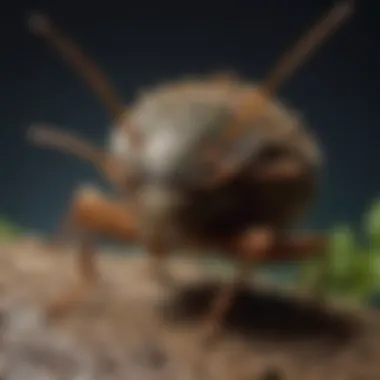

Size and Shape
The size and shape of stink bugs are defining traits in recognizing these pests. Typically, adult stink bugs measure between half an inch to three-quarters of an inch in length. Their body is flattened and shield-shaped, making them easily distinguishable when they are spotted on plants or around homes.
One key characteristic here is the distinctive triangular shape that sets stink bugs apart from other household pests. This feature is not merely aesthetic; it plays a role in how these insects interact with their environment. For instance, their flat bodies allow them to tuck themselves away in tiny crevices to escape predators.
However, it is worth noting that while their size and shape can help with general identification, it can sometimes lead to confusion as nymphs may vary significantly. Their smaller size might make them look like other common pests, leading to misidentification and potentially ineffective treatments.
Color Variations
Color variations in stink bugs contribute significantly to their identification. Generally, these insects can range from brown to green with some species displaying more vibrant hues or patterns. The Brown Marmorated Stink Bug, for instance, has a mottled brown appearance that blends well with tree bark and shrubs, making it difficult to spot.
The color not only aids in identifying where they are hiding but also indicates their health and age, helping homeowners determine the level of infestation. Younger stink bugs, or nymphs, often display different colors than adults, which is another reason understanding color variations is essential. This unique feature can be beneficial in assessing the population’s life cycle stages and devising a tailored control strategy.
Behavioral Traits
Hibernation Patterns
Understanding stink bug hibernation patterns, is beneficial for identifying when and where to anticipate their presence. Stink bugs tend to seek shelter indoors as temperatures drop in late fall. They often infest homes in large numbers, making them a nuisance during winter. Recognizing this pattern allows homeowners to take preventative actions ahead of time, such as sealing potential entry points before the cold season arrives.
A unique aspect of hibernation patterns is the behavior of clustering together, which can result in quite a sight if they migrate en masse into your attic or behind your walls. Not only is it important to know when these bugs tend to come indoors, but also to pay attention to the signs that indicate a hibernation haven in your home. This awareness can save homeowners from waking up to an unwelcome surprise come spring.
Feeding Habits
Feeding habits of stink bugs are also pivotal to understanding their behavior. These bugs are known for their piercing mouthparts that they utilize to feed on a variety of plants — from fruits to vegetables. Observing their feeding practices can provide valuable insight into what types of crops or plants might be at risk in a garden or yard.
One key trait of their feeding is that they can cause significant damage to plants, leading to poor yields in gardens. This damaging feeding makes recognizing their habits essential for gardeners and homeowners. Additionally, the method in which they feed — inserting their mouthparts into the plant tissue — may create visible wounds on the leaves or fruit. Spotting these signs can prompt timely detections and interventions.
In summary, focusing on how to identify stink bugs through their physical attributes and behavioral habits offers practical advantages. Not only does it equip homeowners with the knowledge to pinpoint the problem, but it also empowers them to strategize appropriate measures.
"Knowing your enemy is half the battle; when it comes to stink bugs, understanding how to identify them can lead to effective management before they become overwhelming."
As we dive deeper into effective treatment options in the subsequent sections, remember that accurate identification is the bedrock of successful pest management.
The Ecological Role of Stink Bugs
Stink bugs play a significant ecological role that often goes unnoticed. Understanding their place in the ecosystem enables us to appreciate their functions, as well as the consequences of their overpopulation. In this section, we will explore their relationships with natural predators and prey, and we will investigate the impact of stink bugs on agriculture, which highlights their complex interactions with crops and ecosystems.
Natural Predators and Prey
Stink bugs are not just nuisances; they also fit into the food web. Their natural predators include a variety of insects, birds, and even some mammals. For example, predatory wasps and certain beetles are known to hunt them down. This natural control keeps their populations in check. When stink bugs are present in healthy ecosystems, they also serve as a food source for other species. Some birds particularly thrive on them, contributing to this delicate balance in nature. This interdependence illustrates how removing stink bugs may unintentionally harm predator species and disrupt the ecosystem.
"Nature’s balance can tip in an instant; understanding each creature’s role helps keep things steady."
Impact on Agriculture
Stink bugs do not simply exist in the wild; their presence can have significant effects on agricultural practices.
Crops and Stink Bug Damage
Stink bugs are notorious for their impact on crops. Crops like tomatoes, corn, and beans are especially vulnerable to stink bug damage. By feeding on these plants, they pierce the fruits and vegetables and suck out the juices, causing discoloration and deformities. This feeding pattern isn't just bad for aesthetics; it leads to decreased yields and potential financial losses for farmers. The high susceptibility of certain crops to stink bug damage makes it critical to monitor and manage their populations. Oilseeds, specialty crops, and various fruits are at risk, and understanding these interactions is essential for effective agricultural management.
Some key characteristics of stink bug damage include:
- Discoloration: Leaves and fruits may develop spots or turn brown.
- Physical Deformities: Plants may grow differently, impacting harvest.
Ecosystem Effects
Beyond agriculture, stink bugs also bring about broader ecosystem effects. Their feeding habits can alter plant health and growth patterns. For instance, extensive damage can disrupt pollination processes, resulting in less fruit production. This, in turn, affects food availability for other species within the same ecosystem. While stink bugs might seem insignificant at first glance, their potential to upset local ecosystems is noteworthy.
Unique features of these ecosystem effects include:
- Altered Plant Species: Dominant plants may become less prevalent, changing the entire plant community.
- Disruption in Food Chains: When plant health declines, species that depend on those plants are affected as well.
Both aspects serve as timely reminders that attention to stink bugs is vital for more than just pest management—it's about maintaining the existence of healthy ecosystems.
Preventive Measures Against Stink Bugs
When it comes to effectively treating stink bugs, taking preventive measures can save homeowners a lot of headaches down the line. These strategies not only help minimize the likelihood of an infestation but can also significantly enhance the comfort of your living space. Preventive actions are like putting up a fence before the storm hits; they create barriers that keep stink bugs from becoming unwelcome guests.
By focusing on environmental modifications and the use of natural barriers, homeowners can tackle the root of the problem, rather than just the symptoms. These measures not only work effectively but are often more sustainable and environmentally friendly than chemical solutions, making them a popular choice for those conscious about health and ecology.
Environmental Modifications
Modifications to the environment play a critical role in reducing the likelihood of stink bugs entering your home. A couple of strategies stand out in this area.
Sealing Entry Points
One of the most effective methods to prevent stink bugs from invading your home is by sealing entry points. This approach focuses on the specific aspect of making it nearly impossible for these pests to slip through unnoticed. Think of your home like a ship; if there are holes below the waterline, water will surely seep in, jeopardizing everything.
- Key Characteristic: Sealing entry points reduces not just stink bug sightings but also other unwanted intruders.
- Beneficial Choice: It is a cost-effective solution that can lead to long-term benefits in pest control.
- Unique Feature: Focusing on gaps, cracks, and holes in windows, doors, and even walls allows for a comprehensive approach.
- Advantages: You not only keep stink bugs at bay, but you're also increasing your home's energy efficiency.
- Disadvantages: It may require occasional maintenance, as seals can wear over time.
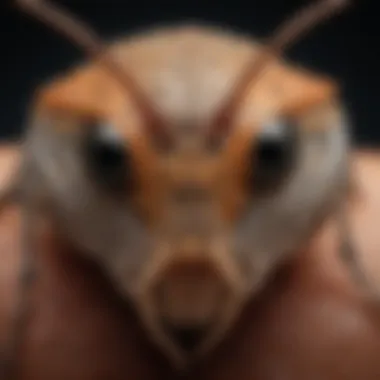

Landscaping Adjustments
Another important method involves making thoughtful adjustments to your landscaping. This approach recognizes that the surrounding environment can either attract or repel stink bugs.
- Specific Aspect: Plants and debris close to your foundation may entice stink bugs into your home.
- Key Characteristic: A well-kept yard can act as a formidable barrier against these pests.
- Beneficial Choice: It enhances curb appeal while also offering protection against unwanted guests.
- Unique Feature: By keeping plants trimmed and removing debris, you diminish the likelihood of creating inviting habitats for stink bugs.
- Advantages: This method offers both aesthetic and practical benefits.
- Disadvantages: It requires regular upkeep to maintain effectiveness.
Use of Natural Barriers
Natural barriers can be an excellent line of defense when it comes to managing stink bugs. These strategies employ elements from nature to deter pests, creating a more organic atmosphere in pest control.
Installing Screens
Installing screens is a straightforward yet effective way to prevent stink bugs from entering your home. They serve as a physical barrier, stopping these critters from making their way indoors.
- Specific Aspect: Screens can be used on windows, doors, and even chimneys to block off potential entryways.
- Key Characteristic: Their visibility might be unassuming, but their impact is substantial, especially in places infested with stink bugs.
- Beneficial Choice: Using screens adds a layer of protection that is easy to implement and maintain.
- Unique Feature: They can be customized to fit various openings, making them a versatile option.
- Advantages: They not only keep stink bugs out but also allow fresh air in, enhancing overall ventilation.
- Disadvantages: Screens may require occasional cleaning to prevent clogging.
Utilizing Plants That Repel Stink Bugs
The final measure involves using plants known for their repellent properties against stink bugs. This method relies on the natural behavioral inclinations of these pests, steering them away from your home.
- Specific Aspect: Certain plants, like marigolds and garlic, have been shown to deter stink bugs effectively.
- Key Characteristic: This strategy promotes biodiversity and a healthier garden ecosystem while serving the dual purpose of pest control.
- Beneficial Choice: It’s an eco-friendly approach that aligns with more sustainable practices.
- Unique Feature: These plants naturally exude oils that stink bugs find offensive, thus keeping them away without the need for chemicals.
- Advantages: Growing repellent plants enhances your landscape while protecting against infestations.
- Disadvantages: Depending on your region, some of these plants might require unique soil or environmental conditions to thrive.
By implementing these preventive measures, homeowners can create a strong defense against stink bugs. The blend of sealing points and natural barriers not only serves to minimize infestations but also enriches your home environment. Taking action now can lead to a more pleasant living space in the long run.
Treatment Options for Stink Bug Infestations
Dealing with stink bug infestations can be quite the challenge, particularly for homeowners trying to maintain the serenity of their living spaces. This section of the article delves into various treatment options that can tackle these pests effectively. Choosing the right treatment method is essential not only to eliminate stink bugs but also to prevent future invasions. With a mix of chemical strategies and eco-friendly alternatives, individuals can find a balanced approach that aligns with their preferences and environmental concerns. Understanding these options provides homeowners with the tools necessary for more successful pest management.
Chemical Control Strategies
Insecticides Overview
When it comes to managing stink bugs, insecticides often come to mind due to their potency. These chemical solutions are a popular choice because they can work quickly to lessen the bug population in your home or garden. By applying specific insecticides with active ingredients like pyrethroids, homeowners can effectively disrupt the lifecycle of these pests. A major advantage of insecticides lies in their accessibility; they come in various forms, such as sprays, granules, or even in bait stations. However, it's important to remember the necessity of following application guidelines closely to maximize safety and efficacy.
On the flip side, insecticides can pose certain disadvantages, such as potential harm to beneficial insects or risks associated with overuse. Thus, while they are a useful tool, discernment is key in their application.
Safety Precautions
Implementing safety precautions when using any pest control methods cannot be overstated. Ensuring safety is vital for both the environment and the individuals living in a home environment. Readily available information suggests that following the guidelines on product labels is the first step in enhancing safety. This includes wearing protective gear like gloves and masks during application.
A critical feature of safety precautions is understanding the proper ventilation of any areas where insecticides are used. This practice helps in avoiding inhalation or skin exposure that can lead to health issues over time. Additionally, it’s wise to keep pets and children away from treated areas to prevent accidental contact. Although these precautions are beneficial, they require diligence and awareness, which some may find cumbersome in their pest control routine.
Eco-Friendly Alternatives
Homemade Solutions
For those leaning towards a more natural approach, homemade solutions are a treasure trove that can effectively repel stink bugs. Ingredients such as diatomaceous earth, soap, and vinegar can be combined to create effective deterrents. One popular concoction involves mixing equal parts water and vinegar, which can be sprayed in areas where stink bugs tend to congregate. These solutions are advantageous in that they minimize the exposure to harsh chemicals, aligning well with eco-conscious living.
However, one needs to keep in mind that while homemade solutions can offer decent results, their effectiveness generally varies and may not match the immediate impact of chemical treatments. Nonetheless, they do present a viable option for those seeking sustainable strategies.
Essential Oils as Repellents
The use of essential oils as repellents represents another promising eco-friendly method for controlling stink bug populations. Certain oils, like peppermint and tea tree, are reported to deter these pests effectively. By diluting these oils with water and spraying them in infested areas, homeowners can not only ward off bugs but also enjoy pleasant scents in their living spaces. This approach is drawing attention, especially among those interested in natural remedies.
A key advantage of essential oils is their dual function; they can be both fragrant and effective. However, it's worth noting that essential oils might require more frequent application compared to chemical options, and results may not be as immediate. This aspect may test the patience of individuals searching for quick fixes.
Remember, the choice of treatment can greatly influence your success in managing stink bugs effectively.
When to Seek Professional Help
Knowing when to call in the pros can make a world of difference when it comes to managing stink bugs in your home. Homeowners sometimes underestimate the scale of an infestation, thinking they can simply handle it on their own. In reality, a rapidly growing stink bug population might be beyond the skills of the average gardener or DIY enthusiast.
Timing is crucial. If you spot signs of severe infestation, it might take more than just a spray or a home remedy to tackle the problem. Here are several reasons why it’s essential to consider professional help:
- Expertise: Pest control professionals have the knowledge and experience to identify various species, understand their behaviors, and choose the best treatment methods.
- Appropriate Tools: Professionals use advanced equipment and products that are not readily available to the public. This means they can act more effectively and timely.
- Safety Concerns: Certain pests, including stink bugs, can carry secondary issues such as diseases or damage to your home. Professionals know how to manage these issues without causing harm to you or the environment.
Making that call can save you both time and money in the long run, particularly if you catch the infestation early.
Signs of Severe Infestation
How do you know when it’s time to pick up the phone? Here are some telltale signs:
- Unusual Numbers: Spotting multiple stink bugs consistently can signal a severe situation. If you notice more than a couple every day, it’s time to take action.
- Damaged Plants or Crops: A sudden decline in plant health, particularly in your garden or around your property, could be the work of a stink bug infestation.
- Foul Odor: As their name implies, stink bugs can emit a noticeable odor, especially when disturbed. If you find that smell lingering in your living spaces, you likely need to take it seriously.
Being attentive to these cues can prevent a minor nuisance from escalating into a major headache.
Choosing the Right Pest Control Service
When turning to professionals, it’s vital to find the right pest control service for your needs. Simple research isn’t enough; certain elements should guide your decision-making process.
Evaluating Techniques Used
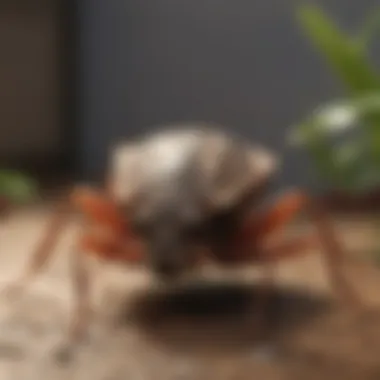

One of the primary factors to consider is the techniques used by the pest control company.
- Integrated Pest Management (IPM): This approach combines monitoring, prevention, and treatment. Companies employing IPM effectively minimize the environmental impact while targeting stink bugs. This method is a popular choice among environmentally conscious homeowners. It typically has fewer risks associated with harmful chemicals, emphasizing safety while effectively eradicating the problem.
- Chemical Options: If a pest control service heavily relies on chemical solutions, it’s essential to ask them about the specific products they plan to use. This aspect will benefit you since certain chemicals might be harmful, especially if you have pets, children, or gardens nearby.
Understanding these factors can dramatically impact not only how well stink bugs are treated but how safe the environment remains for your loved ones.
Understanding Treatment Plans
After evaluating techniques, it’s important to dive into the treatment plan presented by the pest control service.
- Steps Outlined: A comprehensive treatment plan should detail what steps will be taken. This could range from initial assessments to methods for final elimination. It gives you peace of mind knowing what to expect and when to act.
- Follow-Up Care: Be wary of any company that doesn’t provide a follow-up plan. Integrated pest management often includes monitoring for recurrences and adjustments to the initial strategies. It's like having a safety net after the first intervention.
Ultimately, understanding the treatment plan and how a pest control service communicates their procedures can empower you to make informed decisions. This step is crucial to ensuring not just that stink bugs are treated, but also that the methods used align with your values and concerns.
"Choosing the right pest control isn’t just about getting rid of stink bugs; it’s about keeping your home and environment safe."
Paying attention to signs of severe infestation and knowing when to seek professional help can keep your space comfortable, allowing you to focus on things that matter most without worrying about unwelcome guests.
Long-Term Management Strategies
Managing stink bugs effectively requires a dedicated approach that extends beyond immediate solutions. Long-term management strategies aim to create an environment that is less hospitable for these pests. By integrating proactive measures into routine home and garden care, homeowners can significantly reduce the likelihood of stink bug infestations.
Investing time and effort into long-term strategies not only helps in controlling the pest population but also encourages a healthier ecosystem. Homeowners implementing these strategies are often better equipped to handle fluctuations in stink bug activity with greater ease.
Seasonal Considerations
Fall and Winter Precautions
As the temperatures drop, stink bugs seek shelter from the chilly air, often invading homes in droves. The key element of autumn preparation lies in sealing off entry points. By closing gaps around windows and doors with weather stripping and caulking, homeowners can create an effective physical barrier against these unwanted guests.
This practice is a beneficial choice because it not only protects your home but also promotes warm energy efficiency. Sealing entry points keeps your living spaces cozy during winter months while simultaneously reducing the chance of stink bug ingress.
Unique to this time of year is the behavior of stink bugs, which can often lead to over-accumulation in warm spaces. While sealing is advantageous, it’s crucial to check and manage areas where stink bugs might congregate, allowing for timely intervention if necessary.
Spring and Summer Monitoring
With the arrival of warmer months, vigilance becomes paramount. Spring and summer monitoring entails regularly inspecting gardens and homes for any signs of early infestations. Homeowners should focus on trimming plants and removing debris that could provide cover or food sources for these bugs.
The characteristic of proactive monitoring means responding to the early presence of stink bugs before they have a chance to multiply. This tactic proves beneficial in preventing sudden outbreaks during the peak of their activity in late summer.
One unique feature of this seasonal monitoring is the use of pheromone traps. These traps can lure and capture stink bugs before they invade homes, providing a clear advantage in pest management. However, homeowners must remain diligent, ensuring that these traps are regularly checked and maintained to maximize their effectiveness.
Data Collection and Analysis
Tracking Stink Bug Presence
A critical aspect of long-term management strategies is tracking stink bug presence. Homeowners can keep records of sightings and damage reports, which will aid in understanding infestation patterns. This method allows for a more tailored response to current pest challenges.
The character of this tracking is that it provides valuable insights over time—enabling homeowners to recognize when stink bug populations tend to rise. Adopting a systematic approach, such as maintaining a journal or a log, helps in capturing this information for future review.
The unique advantage of tracking is that it empowers homeowners to connect patterns with seasons or specific environmental conditions. However, it requires commitment to record and analyze data, which might be viewed as tedious but is crucial for effective pest management.
Adjusting Strategies Based on Data
Finally, the ability to adapt strategies based on collected data is instrumental. Once homeowners identify peak times or conditions favorable for stink bugs, they can adjust preventive measures accordingly. This adaptability is critical in pest management, offering a targeted approach rather than a one-size-fits-all solution.
The distinguishing feature of this adjustment is that it encourages flexibility in managing ongoing pest issues. Continuous analysis of data allows for timely modifications, ensuring that strategies remain effective as conditions change.
While this process may require occasional recalibrations and updates, the potential to increase efficiency in pest management makes it an invaluable asset for any homeowner—promoting a more sustainable approach to pest issues in the long term.
A proactive approach in managing stink bugs allows homeowners to remain one step ahead of these persistent pests, ensuring both a comfortable living space and a thriving garden.
End
The treatment of stink bugs is a topic that deserves focused attention. With the ever-increasing presence of these pests in homes and gardens, understanding effective management strategies is crucial not just for protecting crops but also for maintaining a healthy living environment.
Summarizing Effective Treatment
In summarizing effective treatment options, it is clear that a multifaceted approach proves beneficial. Combining chemical and eco-friendly methods enhances chances of keeping stink bugs at bay. Homeowners can effectively use insecticides like pyrethroids while simultaneously utilizing natural repellents such as essential oil sprays or homemade remedies. A balanced strategy simplifies pest management, allowing individuals to nurture their gardens without fear of loss due to stink bug infestations.
Future Considerations in Pest Management
Research Developments
Ongoing research in pest management is pivotal, and this area is evolving rapidly, providing a beacon of hope for homeowners. Researchers are focusing on biological control methods, a strategy that harnesses natural enemies of stink bugs. This can include beneficial insects or targeted pathogens that are harmless to humans and other beneficial species.
The key characteristic of these developments is their focus on sustainability and environmental responsibility. As many seek to reduce their chemical footprint, these methods are gaining traction as favorable alternatives. The unique feature of such research lies in its innovative approaches; it strives to create a balance in the ecosystem, often leading to more effective long-term pest solutions. However, the downside can be variability in efficacy and the time required for these methods to establish impact.
Sustainable Practices
Sustainable practices have also taken the center stage as they align with a broader goal of preserving not just crops but the environment. Techniques such as companion planting—a strategy where certain plants are grown together to repel pests—can work in harmony with chemical treatments.
The key characteristic of these practices is that they promote biodiversity; healthier gardens are often less susceptible to pest outbreaks. This consideration makes sustainable practices also a popular choice among house owners who are conscious of their environmental footprint. The unique feature here is the way in which these methods can often be seamlessly integrated into existing landscaping practices, creating both beauty and utility.
However, the trade-off can be the initial uncertainty regarding the effectiveness until strategies are well-established in a particular environment.
Overall, the article elucidates that managing stink bugs requires a thoughtful and integrated approach, ensuring that both immediate relief and long-term sustainability are within reach.


